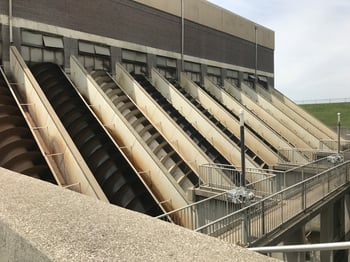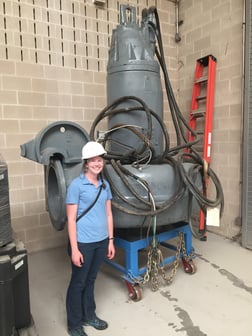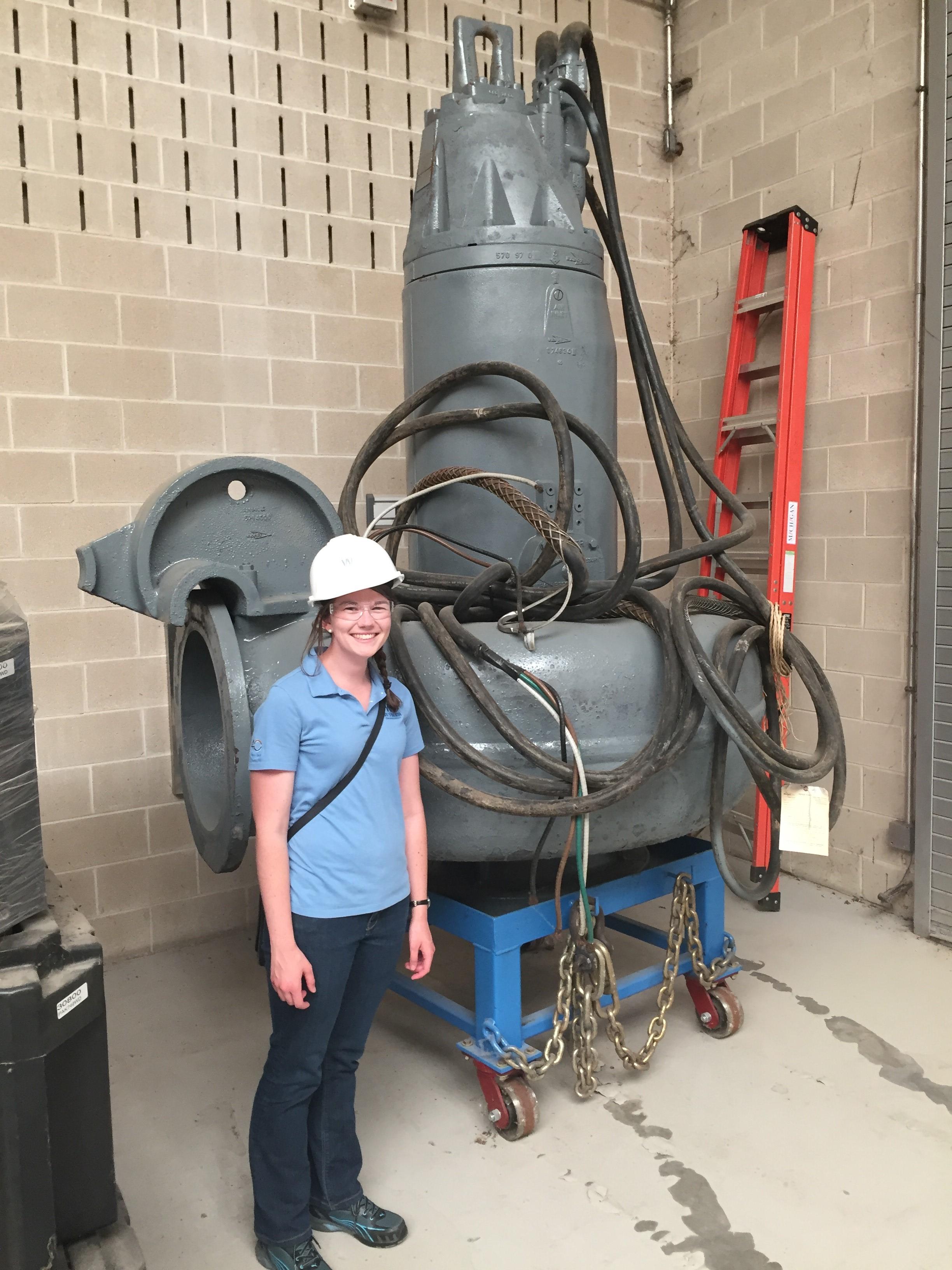
Several members of the Indianapolis office recently participated in an informative tour of Indianapolis’ largest wastewater treatment plant. Led by Citizen Energy Group’s Dan Kramer, the educational tour of the Belmont Advanced Wastewater Treatment Plant (AWT) touched on all aspects of the plant’s treatment processes. Starting at the plant’s ten influent Archimedes screw pumps, Mr. Kramer walked the group through the liquid and solids treatment processes, pointing out the key components of each system, as well as providing both historical facts of the plant and describing the plant’s recent modifications and upgrades. Wessler’s group ranged from senior project engineers familiar with the plant to electrical staff and this year’s summer interns, who had never seen a wastewater treatment plant of the magnitude of Belmont.
To be able to visit a treatment plant the size of Belmont during a couple hour field trip requires that some details get abbreviated. Below are a few key components of the plant and the tour:
-
The Belmont AWT is now capable of hydraulically conveying 330 MGD of influent wastewater flow during wet-weather conditions. This has not always been the case. In the past, the secondary system was not capable of treating what could be treated in the Headworks and Primary Clarifiers. As a result, Equalization (EQ) Basins were created to capture the peak flows for treatment once wet-weather flow subsided. Within the past decade, a design and construction project added capacity to the secondary system to allow the flow treated in the preliminary and primary treatment processes to proceed through the treatment train. This has helped reduce the use of the EQ Basins and further reduced the flow sent to the White River.
-
The recent secondary expansion included the addition of Air Nitrification System (ANS) tanks, which directly receive flow from the Primary Clarifiers during normal dry-weather flow conditions. The tanks receive flow in either a plug-flow condition or in a step-feed flow condition, which creates different ways that the plant can handle flows and loads. However, during wet-weather flow conditions, the tank can be used in a contact stabilization mode where the forward flow from the Primary Clarifiers bypasses the ANS tanks to go directly to the plant’s Oxygen Nitrification System (ONS) tanks, while the return activated sludge from the Final Clarifiers is sent to the ANS tanks and held there until normal operation can resume.
-
 The Belmont AWT contains all of the solids handling facilities for Indianapolis, thereby handling both the solid treatment for Belmont, as well as for Indianapolis’ other treatment plant, the Southport AWT. The sludge from the Southport AWT is pumped approximately 6-miles to Belmont to be treated in conjunction with Belmont’s sludge. Belmont has also recently undergone projects to improve their sludge dewatering and incineration. A portion of the plant’s belt filter presses were removed and replaced with centrifuges that are capable of dewatering the sludge to a greater extent before being conveyed to multi-hearth incinerators. Five new centrifuges were installed to replace the 12 existing belt filter presses. Additionally, the incinerators were recently upgraded to be able to meet more stringent, clean air requirements.
The Belmont AWT contains all of the solids handling facilities for Indianapolis, thereby handling both the solid treatment for Belmont, as well as for Indianapolis’ other treatment plant, the Southport AWT. The sludge from the Southport AWT is pumped approximately 6-miles to Belmont to be treated in conjunction with Belmont’s sludge. Belmont has also recently undergone projects to improve their sludge dewatering and incineration. A portion of the plant’s belt filter presses were removed and replaced with centrifuges that are capable of dewatering the sludge to a greater extent before being conveyed to multi-hearth incinerators. Five new centrifuges were installed to replace the 12 existing belt filter presses. Additionally, the incinerators were recently upgraded to be able to meet more stringent, clean air requirements.
Due to the recent project modifications and upgrades, the City of Indianapolis is now able to treat more flow, more efficiently, and to more stringent standards. With the tour of Belmont, Wessler staff were reminded, or were learning for the first time, the magnitude of what is involved in treating the flow for a city the size of Indianapolis.
Hint: It’s big.
Tags


